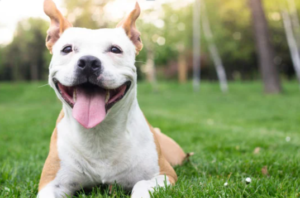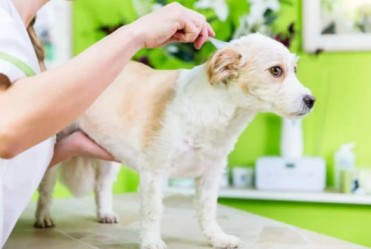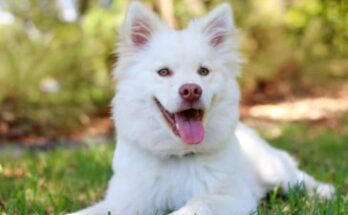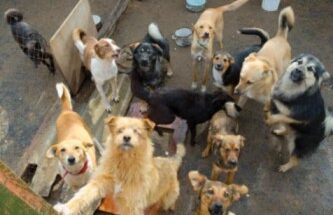How to remove lice in a dog

How to remove lice in a dog, If your dog has lice, it will be itchy. And he will be seen licking, biting, and scratching his body. And if you think so, you should see a doctor. The doctor can tell you the solution to this disease when dogs scratch their skin; their skin becomes red and irritated, and germs spread. And finally, lice infestations can lead to anemia, lethargy, and weight loss.
What Are Dog Lice?
There are two types of dog lice: Chewing Lice and itchy lice.
- Chewing Lice
Chewing lice mainly attack birds. Chewing lice, which are parasites of mammals, feed on skin secretions, dried blood, fur, and skin debris. Although they are not bloodsuckers, biting lice can cause severe pain. Symptoms of infection include itching, loss of appetite, and reduced egg production in chickens. Infected animals are usually treated with dust or drip.
- Itchy lice
Itchy lice always make any animal sick, if any animal has lice when it itches, it will have germs and irritation on its body. Symptoms of body lice bites include itchy and irritated skin and small, discolored bites. And dog lice can make the animal sick. And can cause damage. You should contact a doctor immediately.
What Causes Lice in Dogs?

Lice are spread when a dog comes into contact with another dog that has lice. When dogs are mixed, all of the dog’s lice are passed from one to the other. Transmission is most likely to occur in areas where unfamiliar dogs are present. Such as:
- Both types of lice can be transmitted between dogs by direct contact or by contact with contaminated objects.
- Places where dogs socialize such as dog parks, boarding kennels, grooming facilities, and animal shelters are all potential places where pets can get lice.
- Dogs that share kennels, beds, furniture, or outdoors with infested dogs are at increased risk of lice infestation.
Diagnosis of Lice in Dogs
The type of infestation is diagnosed by a veterinarian by examining a sample of dog fur or scraping the skin for nits and adult lice under the microscope. Chewing lice are identified by their large mouthparts used for chewing and grasping fur. Sucking lice are identified by their narrow mouthparts and slightly more developed claws.
How to Treatment lice in dogs
Many chemical products kill and repel lice, including fipronil and selectin. Although it may have some side effects (such as a sulfur smell and a short-term yellowing of your pet’s fur), it works quite well. Check with your veterinarian about treating lice. Using shampoo and a fine-toothed lice comb or flea comb to remove lice from your dog’s skin can also be helpful. Be sure to wash the comb after one use. Be sure to dispose of any bedding or brushes that may be contaminated. And if possible, be sure to bathe any pets you have, and steam-clean furniture or carpets.
Prognosis for Dogs with Lice
If you have more than one dog and one of them has lice, treat that dog immediately and keep that dog away from them because the infection is likely to spread. But a good treatment can take more than a week. It may be best to treat all dogs. Because lice from one dog can spread to another dog. Dogs infected with lice can be cured if treated consistently, your dog will also be cured and never get sick.
How to prevent dogs from Lice

To prevent dog lice, we should take note of these declarations, such as:
- If a dog has lice, do not let another dog sit with it.
- If the dog has lice, separate the brush, comb, etc.
- Keep that dog away from them, so the infection doesn’t spread and other dogs don’t get sick.
- Separate the dog’s food and utensils as well.
- And separate the shampoo and soap for bathing so that the other dogs do not get sick.
What’s the difference between lice and fleas
From lice to allergies, your dogs can suffer from many ailments. Identifying a health problem in your pet can be difficult. When it comes to lice and fleas, there is a distinct difference between them.
- Mobility
Fleas move quickly and can jump from host to host. Lice use their mouthparts to attach themselves to the hair shaft to reduce them.
- Evidence
Fleas leave visible waste called flea dirt on your pet which looks like specks of black pepper. Lice are scavengers that clean up the dead skin on your pet but leave behind sticky round nits on your animal.
- Popularity
Lice are much less common than fleas. They usually get picked up from strays, unprotected pets at boarding kennels, or unhealthy dogs.
Conclusion of How to remove lice in a dog
In conclusion, removing lice from your dog requires a comprehensive approach that includes thorough grooming, effective treatments, and diligent prevention strategies. Start by identifying the infestation and using appropriate medicated shampoos or topical treatments specifically designed for lice. Regularly comb your dog’s fur with a fine-toothed lice comb to physically remove the parasites and their eggs. It’s essential to wash your dog’s bedding and clean their environment to eliminate any remaining lice and prevent re-infestation. Additionally, maintaining your dog’s overall health through a balanced diet and regular veterinary check-ups can bolster their immunity against pests. By taking these steps, you can effectively rid your dog of lice and keep them comfortable and healthy.
честные казино с быстрыми выплатами
бездепозитные бонусы казино
играть в лучшем казино на деньги
база казино с бездепозитным бонусом
онлайн казино России
casino oyunu
About us click here




Выгодные предложения на технику Microsoft, помогут сэкономить ваш бюджет.
дистрибьютер Microsoft best-lip-filler.com .
Best companies for installing double glazed windows in Melbournehouse window replacement near me bestnosefiller.com/replacement-melbourne .
Individual Lineage 2 servers for experienced players
best Lineage 2 private server http://www.cryptoexlicense.com .
Why do people keep pets, the advantages of pets.
tips for choosing a pet, advantages of different pet breeds.secrets of pet care, how to ensure the health of your pet.fun facts about pets, how pets influence us.effective methods of pet training, how to teach a dog to fetch.
another name for domestic animals http://petstorepetsupply.com/index.php/2024/05/22/beginners-guide-to-gardening/ .